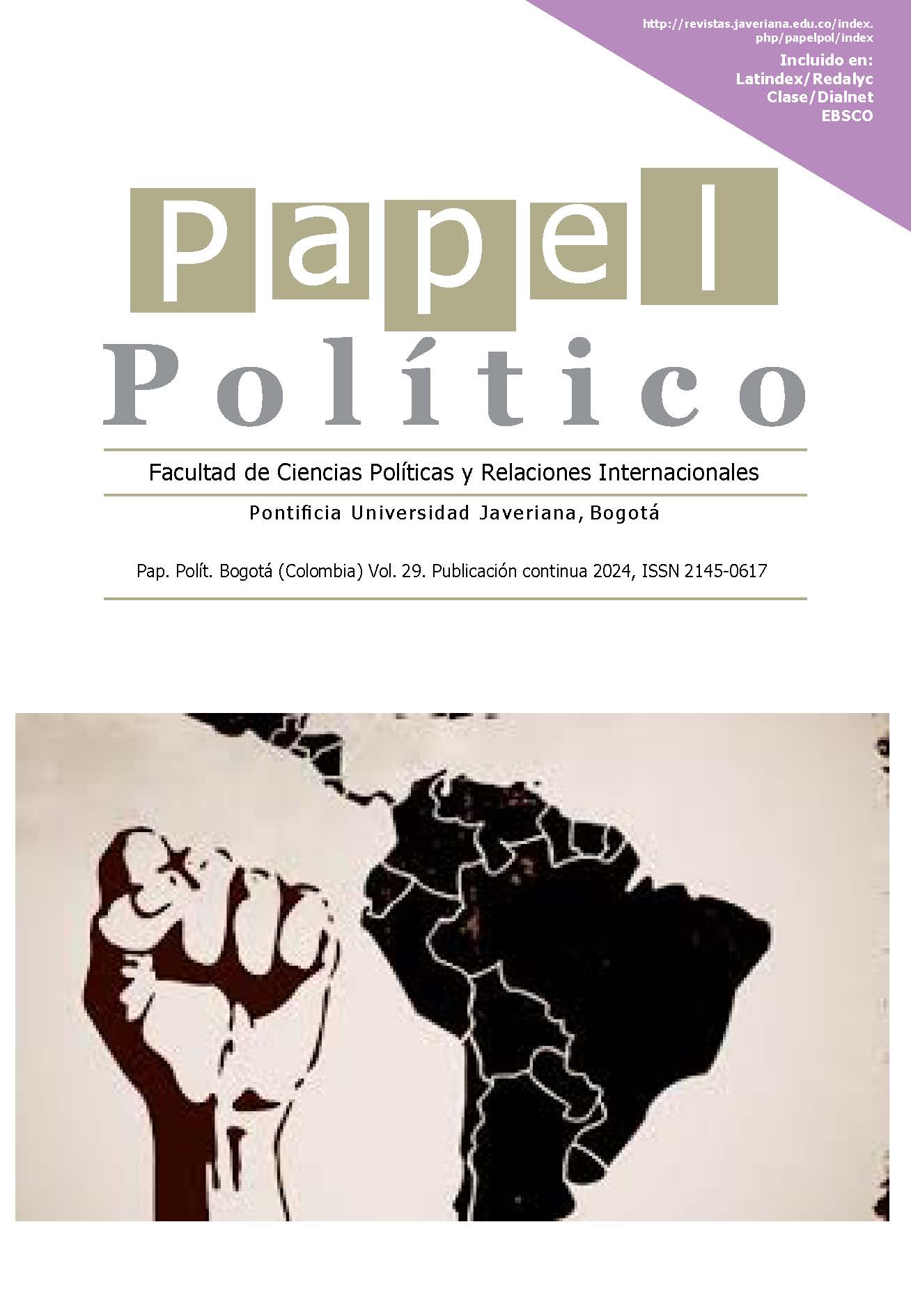Resumen
La elección de Pedro Castillo como primer presidente peruano de izquierda en 2021, candidato del partido político de orientación marxista Perú Libre, fue una sorpresa para la sociedad en general y para la derecha política en particular. El 7 de diciembre de 2022, Castillo puso fin a su presidencia. En este artículo pretendemos arrojar luz sobre las razones del ascenso de Castillo al poder político, su caída y el surgimiento de un nuevo movimiento social contra el régimen autoritario de Dina Boluarte. Concluimos que Castillo nunca ha sido una amenaza para los intereses económicos del capital. Su presidencia no contó con las bases políticas y sociales para iniciar procesos hacia una transformación política, económica, social y cultural estructural y radical. Además, su presidencia no tenía la capacidad para desarrollar e implementar propuestas que perjudicarían los intereses del capital. Sostenemos que Castillo fue política, económica y socialmente autocastrado. Al poner fin a su presidencia, Castillo tomó la iniciativa en la lucha de clases que desembocó en el régimen autoritario de Boluarte y el surgimiento de un nuevo movimiento social con base en las regiones y con posibilidades de volverse hegemónico.
Béjar, T. (2023). Herencia colonial, capitalismo racista y estallido social. En G. Montoya y H. Quiroz (coords.), Estallido Popular. Protesta y masacre en el Perú, 2022-2023 (pp. 39-50). Lima: Editorial Horizonte.
Caballero, V. (2023). Castillo. Breve historia del gobierno del pueblo. Lima: Penguin Random House Grupo Editorial.
Dancourt, Ó. (2016). Las vacas flacas en la economía peruana. Working Paper 428. Lima: PUCP, Departamento de Economía.
Dos Santos, T. (1986). Imperialismo y dependencia. México: Ediciones Era S.A.
Gonzales de Olarte, E. (2016). Una economía incompleta. Perú 1950-2007. Análisis structural. Lima: Fondo Editorial de la Pontificia Universidad Católica del Perú and Instituto de Estudios Peruanos.
INEI. (2014). Perú: Estructura empresarial 2013. Lima: INEI.
INEI. (2015). Perú: Estructura empresarial 2014. Lima: INEI.
INEI. (2016). Perú: Estructura empresarial 2015. Lima: INEI.
INEI. (2017). Perú: Estructura empresarial 2016. Lima: INEI.
INEI. (2018). Perú: Estructura empresarial 2017. Lima: INEI.
INEI. (2019). Perú: Estructura empresarial 2018. Lima: INEI.
INEI. (2020). Perú: Estructura empresarial 2019. Lima: INEI.
INEI. (2021). Perú: Estructura empresarial 2020. Lima: INEI.
Lust, J. (2023). Underdevelopment in Peru. A profile of peripheral capitalism. London y New York: Routledge.
Lust, J. (2019a). Objective and subjective conditions for the continuity of the Peruvian extractive development model. Globalizations, 16(7), 1232-1246.
Lust, J. (2019b). Capitalism, class and revolution in Peru, 1980-2016. Cham: Palgrave MacMillan.
Lust, J. (2019c). The rise of a capitalist subsistence economy in Peru. Third World Quarterly, 40(4), 780-795.
Lust, J. y Cypher, J. M. (2021). Bordeando el precipicio. ¿Puede el nuevo presidente izquierdista del Perú, Pedro Castillo, mantenerse en el poder?. Observatorio del Desarrollo, 10(29), 23-31.
Ministerio de Trabajo y Promoción del Empleo. (2020). Anuario Estadístico Sectorial 2020. Lima: Ministerio de Trabajo y Promoción del Empleo.
Motta Villegas, J. D. (2023). Estallido: crisis, golpe de Estado y lucha de clases en el Perú. En G. Montoya y H. Quiroz (coords.), Estallido Popular. Protesta y masacre en el Perú, 2022-2023 (pp. 67-82). Lima: Editorial Horizonte.
Quiroz, H. y Beraun, E. (2023). Insurrección y nueva utopía andina. En G. Montoya y H. Quiroz (coords.), Estallido Popular. Protesta y masacre en el Perú, 2022-2023 (pp. 173-177). Lima: Editorial Horizonte.
Roberts, K. M. (1998). Deepening democracy? The modern left and social movements in Chile and Peru. Stanford: Stanford University Press.
Roberts, K. M. (1996). Economic crisis and the demise of the legal left in Peru. Comparative Politics, 29(1), 69-92.
Smith, J. (2016). Imperialism in the Twenty-First Century. Globalization, super-exploitation, and capitalism’s final crisis. New York: Monthly Review Press.
Svampa, M. (2019). Neo-extractivism in Latin America.Socio-environmental Conflicts, the Territorial Turn, and New Political Narratives. Elements in Politics and Society in Latin America. Cambridge: Cambridge University Press, en chrome-extension://efaidnbmnnnibpcajpcglclefindmkaj/https://www.memoria.fahce.unlp.edu.ar/libros/pm.5180/pm.5180.pdf (consultado 25/07/23).
Svampa, M. (2013). Consenso de los commodities y lenguajes de valorización en América Latina. Nueva Sociedad, 244, en chrome-extension://efaidnbmnnnibpcajpcglclefindmkaj/https://www.memoria.fahce.unlp.edu.ar/art_revistas/pr.13326/pr.13326.pdf (consultado 25/07/23).

Esta obra está bajo una licencia internacional Creative Commons Atribución 4.0.
Derechos de autor 2024 Jan Lust



